The zigzag stitch is a fundamental technique in sewing, known for its versatility and strength. However, encountering a straight stitch when expecting a zigzag pattern can be perplexing.
This anomaly prompts a closer examination of potential underlying issues. From incorrect settings to mechanical malfunctions, various factors might contribute to this unexpected outcome.
Understanding these nuances is pivotal in maintaining the integrity and quality of sewing projects.
In this discussion, we delve into the possible reasons behind the occurrence of a straight zigzag stitch and offer insights on how to troubleshoot and rectify the situation, ensuring smooth and precise stitching for future endeavors.
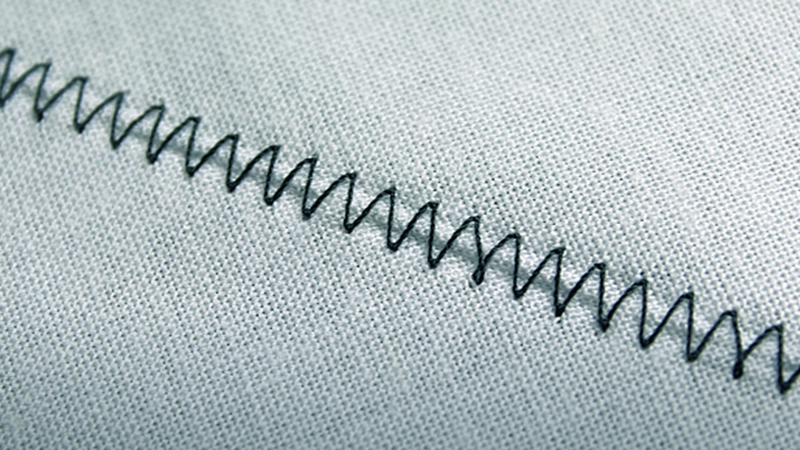
Why Is My Zig Zag Stitch Straight?
A zigzag stitch is a common type of stitch used in sewing that creates a back-and-forth pattern, resembling the letter “Z” or a series of connected diagonal lines.
When your zigzag stitch appears straight, rather than having the characteristic zigzag pattern, there could be a few potential reasons for this:
Incorrect Stitch Selection
Double-check the stitch selection on your sewing machine. Ensure that you’re choosing the correct stitch pattern for the task at hand.
Sometimes, due to multitasking or momentary distraction, the selection might have been inadvertently changed. Take a moment to verify and reset the stitch selection if needed.
Stitch Width Setting
The stitch width adjustment is a critical factor in achieving a zigzag stitch. If the width is set too narrow or at zero, it will result in a straight stitch.
Take a look at your machine’s settings and adjust the stitch width to your desired zigzag width. This parameter controls how wide each “zag” in your zigzag will be.
Mechanical Issues
A zigzag stitch involves precise mechanical movements. If there are any obstructions, misalignments, or components that aren’t functioning properly, it can lead to a straight stitch.
Inspect your machine for any visible issues and consider seeking professional assistance if you suspect a mechanical problem.
Tension Settings
Proper tension between the upper thread and the bobbin thread is essential for any stitch pattern, including zigzag.
When the tension is uneven or too tight, it can affect the appearance of the stitches. Adjust the tension settings according to your machine’s manual to ensure balanced tension for a clean zigzag stitch.
Thread Type or Weight
The type and weight of the thread can greatly influence the outcome of your stitches. Thicker or heavier threads may not feed through the machine smoothly, potentially resulting in a straighter stitch.
Make sure you’re using a thread that is compatible with your machine and appropriate for the desired stitch pattern.
Needle Position
Check that the needle is correctly positioned in the center. An off-center needle can lead to irregular stitch patterns.
This adjustment is especially crucial when working with zigzag stitches, as it affects the placement of each “zag” in the pattern.
Feed Dogs Issues
The feed dogs play a crucial role in guiding the fabric through the machine. If they are clogged with lint, damaged, or not moving properly, it can disrupt the stitch pattern.
Regular cleaning and maintenance of the feed dogs will ensure smooth fabric movement and consistent stitching.
User Error
Pay attention to your technique while sewing. Ensure that you’re guiding the fabric evenly and maintaining a consistent sewing speed.
Abrupt changes in speed can lead to inconsistencies in the stitch pattern. Practice steady and controlled sewing movements to achieve the desired zigzag effect.
Machine Compatibility
Consider the capabilities of your sewing machine. Some machines are designed primarily for straight stitches and may not excel at producing complex patterns like zigzag.
If you frequently require a zigzag stitch, you might want to explore machines with more diverse stitch options that cater to your specific sewing needs.
Effects of Zig Zag Stitching Straight
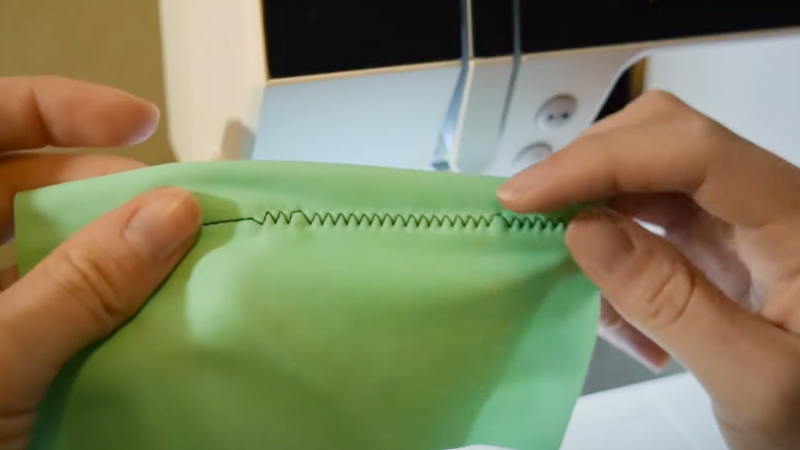
When a zigzag stitch turns out straight instead of the intended zigzag pattern, it can have several effects on your sewing projects and the overall quality of your work:
Strength and Durability
Straight stitches are generally less flexible and may lack the strength and durability that a zigzag stitch provides.
Zigzag stitches are commonly used for seams that need to withstand stress and movement, like on stretch fabrics or in activewear. Straight stitches may not offer the same level of resilience.
Fraying
Zigzag stitches are effective in preventing fabric edges from fraying, especially in lightweight or delicate fabrics.
When you use straight stitches instead, the fabric edges may be more prone to fraying over time, potentially causing your seams to weaken and unravel.
Stretch and Elasticity
Zigzag stitches are essential for sewing stretch fabrics like knits, as they allow the seams to stretch with the fabric. Straight stitches, on the other hand, lack the same elasticity, which can result in popped stitches or compromised stretch in the finished garment.
Appearance
Straight stitches can create a cleaner, more streamlined appearance in some cases, especially when working on woven fabrics or decorative stitching.
However, they may not be suitable for securing edges or joining fabric pieces that require extra reinforcement, as zigzag stitches can provide.
Functionality
In some sewing projects, a straight stitch instead of a zigzag may not serve the intended purpose. For example, when attaching patches, elastic bands, or trims, the zigzag stitch may be necessary to ensure a secure and flexible attachment.
Aesthetics
Zigzag stitches are often used for decorative purposes, adding texture and visual interest to sewing projects. If your straight stitch replaces a decorative zigzag, it may affect the overall appearance and design of your creation.
Seam Puckering
Straight stitches can sometimes cause seam puckering, especially on lightweight or delicate fabrics. Zigzag stitches are less likely to cause this issue because they distribute tension more evenly across the seam.
Repair Difficulty
When you later need to make alterations or repairs to a seam that was initially sewn with a straight stitch instead of a zigzag, it can be more challenging to work with. Zigzag stitches are easier to remove and replace when necessary.
Finishing Edges
Zigzag stitches are commonly used to finish raw fabric edges, preventing fraying. When straight stitches are used for this purpose, additional measures like serging or using pinking shears may be required to prevent fraying.
How to Diagnose the Problem?
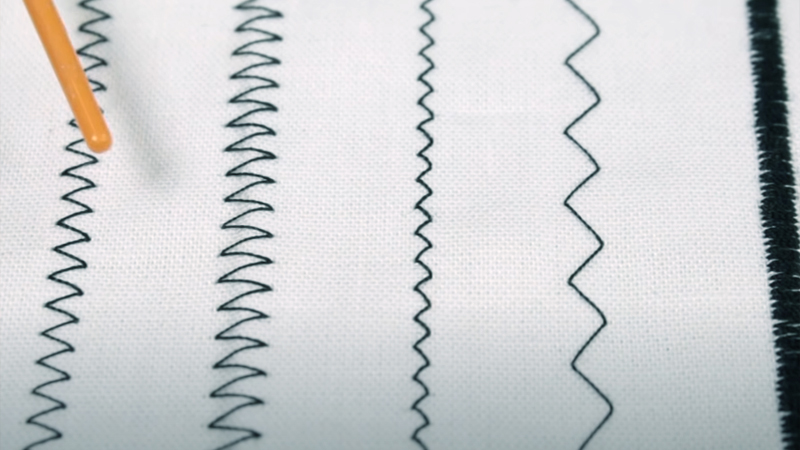
Diagnosing the problem of a zigzag stitch coming out straight on your sewing machine involves a systematic process of elimination.
Here are step-by-step instructions to help you identify the root cause:
Check Stitch Selection
Start by ensuring that you’ve selected the correct zigzag stitch on your sewing machine. Sometimes, a change in stitch settings can accidentally switch your machine to a straight stitch.
Adjust Stitch Width
Verify the stitch width setting. If it’s set too narrow or at zero, it will produce a straight stitch. Adjust the width to the desired zigzag width for your project.
Inspect Mechanical Components
Examine the mechanical components of your sewing machine. Look for any visible obstructions, jams, or misalignments in the mechanisms responsible for creating the zigzag stitch. Ensure that everything moves smoothly and freely.
Check Tension Settings
Evaluate the tension settings. Incorrect tension between the upper thread and the bobbin thread can lead to irregular stitching. Make sure the tension settings are balanced according to your machine’s recommendations.
Examine Thread Type and Weight
Confirm that you’re using the appropriate type and weight of thread for your sewing machine.
Heavier threads may not feed properly for a zigzag stitch. Consider switching to a thread that is compatible with your machine and the desired stitch pattern.
Needle Position
Verify that the needle is correctly positioned in the center. An off-center needle can affect the stitch pattern. Adjust the needle position if necessary.
Inspect Feed Dogs
Examine the feed dogs, the small tooth-like mechanisms that move the fabric through the machine. Clean and lubricate them if needed, as obstructions or damage can disrupt the stitch pattern.
Review User Technique
Assess your sewing technique. Ensure that you’re guiding the fabric evenly and at a consistent speed. Sudden changes in sewing speed can lead to inconsistencies in the stitch pattern. Practice steady and controlled movements.
Machine Compatibility
Consider your sewing machine’s capabilities. Some machines are designed primarily for straight stitching and may not excel at producing complex patterns like zigzag.
When zigzag stitching is a regular requirement, you may want to invest in a machine with more diverse stitch options.
Test on Scrap Fabric
Before proceeding with your project, test the zigzag stitch on a scrap piece of fabric. This will help you verify if the issue has been resolved and ensure that the zigzag stitch appears as expected.
Tips for Preventing Future Issues
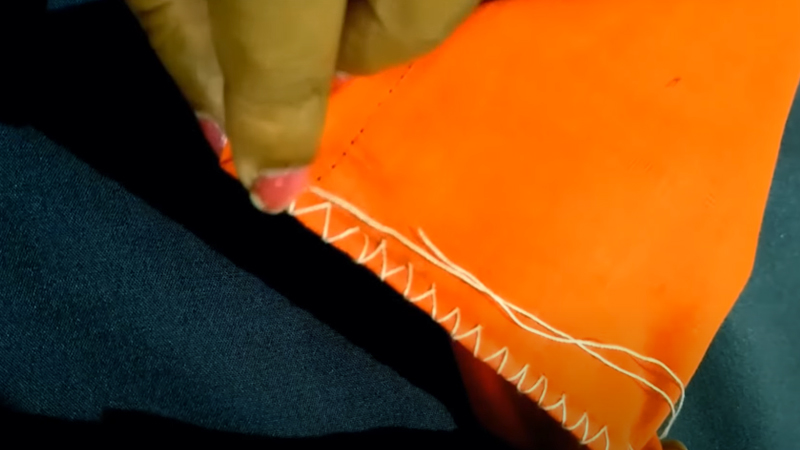
Preventing future issues with your sewing machine and ensuring that your zigzag stitch remains consistent and accurate requires a combination of regular maintenance, proper technique, and attention to detail.
Here are some tips to help you avoid such problems in the future:
Regular Maintenance
Regular maintenance is crucial in keeping your sewing machine in top working condition. Apart from the routine cleaning of visible areas, it’s important to also oil the machine’s moving parts as recommended by the manufacturer.
Use High-Quality Thread
The quality of thread used in your sewing projects can greatly influence the outcome.
Opt for threads that are known for their durability and compatibility with your specific sewing machine. High-quality threads are less likely to break or cause tension problems.
Proper Thread Tension
Achieving the correct thread tension is a delicate balance that significantly impacts stitch quality. Take the time to understand your sewing machine’s tension settings and how they interact with different fabrics and thread types.
Needle Care
The needle is a fundamental component of the sewing process. Using the right type and size of needle for your fabric is crucial.
Dull or bent needles can lead to skipped stitches or fabric damage. Replacing needles regularly.
Check Bobbin Thread
Regularly inspecting the bobbin thread is a good practice. Look for any signs of tangles, snags, or improperly wound thread.
Ensure the bobbin is correctly inserted into the machine, as an improperly placed bobbin can lead to stitching problems.
Machine Compatibility
Understanding the capabilities and limitations of your sewing machine is important. Some machines are designed primarily for specific types of stitches or fabrics.
When you find yourself frequently needing specialized stitch patterns, it might be worth considering an upgrade to a machine that better suits your sewing needs.
Read the Manual
The sewing machine manual is a valuable resource that provides specific information about your machine’s features, functions, and maintenance requirements. Take the time to read and familiarize yourself with the manual to make the most out of your machine.
Professional Servicing
Periodic professional servicing by a trained technician is essential for maintaining the longevity and performance of your sewing machine.
They can perform in-depth maintenance tasks and identify and address any underlying issues that may not be readily apparent to the average user.
Storage
Proper storage of your sewing machine is crucial in preventing dust and debris from accumulating in sensitive areas. Store your machine in a clean, dry environment, and consider using a cover to further protect it from dust and humidity.
Education and Practice
Continuous learning and practice are key to becoming a proficient and confident sewist. Take advantage of educational resources, such as classes, tutorials, and books, to enhance your skills.
When to Seek Professional Help?
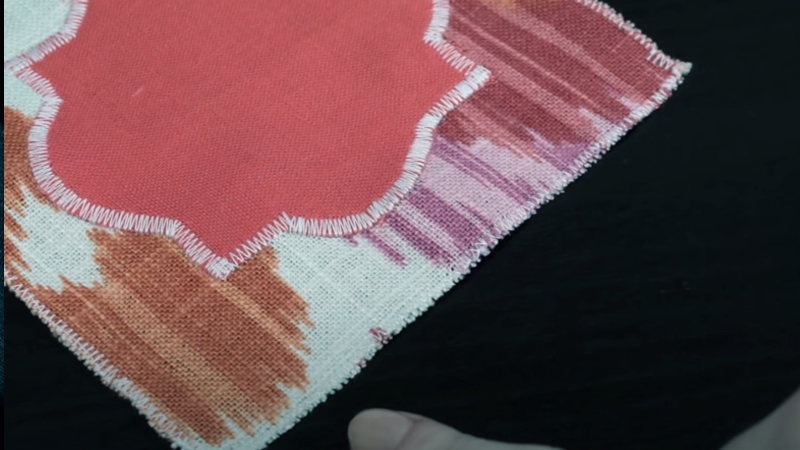
Knowing when to seek professional help with your sewing machine is crucial for ensuring it operates at its best.
Here are some situations that warrant the assistance of a trained technician:
Persistent Stitching Issues
When you’ve followed troubleshooting steps and your machine still consistently produces incorrect stitches, it’s time to consult a professional.
This could indicate a more complex mechanical problem that requires expertise to diagnose and fix.
Unusual Noises or Vibrations
Unusual sounds or excessive vibrations during sewing may indicate internal issues with your machine. A technician can identify and address any mechanical problems that may be causing these disturbances.
Difficulty with Specific Functions
When certain functions or features of your sewing machine are not working as they should, it’s best to seek professional assistance.
This could include issues with buttonholes, embroidery settings, or any specialized features unique to your machine.
Bobbin or Bobbin Case Problems
When the bobbin or bobbin case is consistently causing issues, such as irregular tension, bobbin thread jams, or incorrect winding, it’s advisable to have a technician inspect and potentially replace these components.
Electrical or Power Problems
Any electrical issues, such as power surges, short circuits, or non-responsive controls, should be addressed by a professional.
Attempting to fix electrical problems on your own can be dangerous and may further damage the machine.
Timing and Alignment Issues
Timing refers to the precise coordination of the needle and bobbin mechanisms. If your machine is consistently out of time, it requires expert adjustment. Attempting to realign the timing without proper knowledge can lead to further damage.
Loss of Stitch Consistency
When your machine has been working well but suddenly experiences a loss of stitch consistency or quality, this could signal a hidden mechanical issue.
A technician can conduct a thorough examination to identify and rectify the problem.
Broken or Damaged Parts
When essential components like the needle bar, presser foot lifter, or feed dogs are damaged or broken, it’s best to have them replaced by a professional. They have access to genuine parts and the expertise to carry out repairs safely.
Routine Maintenance and Servicing
Regular servicing of your sewing machine is essential for its longevity and optimal performance.
A professional technician can perform comprehensive maintenance tasks that may be beyond the scope of standard home care.
Complex Repairs or Upgrades
For intricate repairs or upgrades, such as replacing electronic components or adding advanced features, it’s advisable to seek the expertise of a trained technician. They have the specialized knowledge and tools required for such tasks.
FAQs
Why is my sewing machine producing straight stitches instead of zigzag stitches?
This issue can arise due to various reasons, such as incorrect stitch settings, thread tension problems, or mechanical issues with your sewing machine.
How can I troubleshoot a straight zigzag stitch on my sewing machine?
Start by checking your stitch settings, thread quality, and tension adjustments. Ensure your machine is properly threaded, and the needle is centered.
Is it normal to occasionally get a straight stitch while using the zigzag setting?
No, it’s not normal. While human error can occasionally cause a straight stitch, consistent straight stitching on the zigzag setting indicates an issue that needs attention.
Can using the wrong type of thread cause a straight zigzag stitch?
Yes, using the wrong type or weight of thread can impact your stitch quality.
When should I consider seeking professional help for my sewing machine’s stitching issues?
If you’ve tried troubleshooting steps and continue to face problems with straight zigzag stitches, it’s advisable to consult a professional sewing machine technician to diagnose and address any mechanical issues
Wrap Up
In the realm of sewing, mastering the zigzag stitch is a crucial skill. However, encountering a straight stitch in its place can be perplexing.
Through thorough exploration, we’ve uncovered various potential culprits, from incorrect settings to mechanical hiccups. Addressing these issues is essential for seamless and durable stitching.
By adhering to proper maintenance practices, selecting high-quality materials, and understanding the nuances of tension and threading, you can ensure your sewing machine consistently delivers the desired zigzag pattern.
Remember, seeking professional help when needed is a wise choice. With these insights, you’re better equipped to navigate the world of sewing, producing impeccable creations with confidence and precision.
Leave a Reply